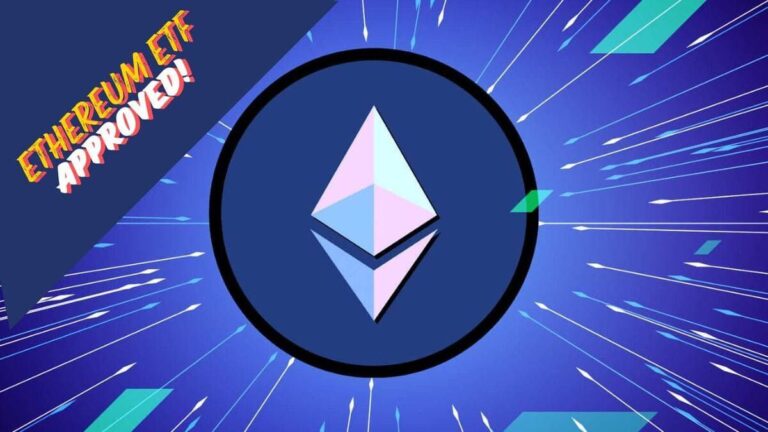After Ethereum ETF approval, keep an eye on these Top 10 Altcoins for 5x to 10x gains in this bull season.

1)NEAR – NEAR Protocol (NEAR) is a layer-one blockchain that functions as a community-run cloud computing platform. It aims to address challenges such as slow transaction speeds, low throughput, and limited interoperability that have been a hurdle for other blockchains. NEAR Protocol provides a conducive environment for decentralized applications and aims to create a platform that is both developer and user-friendly.
2)SUI – Sui Network is a Layer-1 blockchain that excels in providing faster deployment of smart contracts and high transaction speed.
The main goal of the platform is to simplify and improve the creation of various applications and functions in the Web3 ecosystem, solving the most common problems in the industry.
3)APTOS – Aptos is a Layer-1 blockchain, developed by Aptos Labs. This studio was founded by core contributors of Diem, the blockchain ecosystem by Meta that never saw the light of day. Like many other blockchains, Aptos wants to be scalable, safe, reliable and upgradable.The network uses a Proof-of-Stake (PoS) consensus mechanism where validators need a minimum amount of staked APT tokens. Aptos chain has validators that receive and process transactions using Byzantine fault tolerance (BFT) and Proof of Stake (PoS).
4)UNISWAP – Uniswap is a decentralized cryptocurrency exchange that uses a set of smart contracts to create liquidity pools for the execution of trades. It is an open source project and falls into the category of a DeFi product because it uses smart contracts to facilitate trades instead of a centralized exchange.
5)ARB – Arbitrum is an Ethereum layer-two scaling solution that strives to enhance the speed, scalability, and cost-efficiency of Ethereum.
Arbitrum operates using optimistic rollups, a technology that aims to increase the scalability of Ethereum. It supports unmodified Ethereum Virtual Machine (EVM) contracts and transactions, meaning existing Ethereum decentralized applications (DApps) can run on Arbitrum without any code changes. Arbitrum aims to handle a high number of transactions per second with lower fees and faster finality, while maintaining the security guarantees of Ethereum. It also allows developers to deploy programs written in popular programming languages like Rust, C++, and more using Stylus, its upcoming EVM+ equivalence feature.
6)ETC – Ethereum Classic is a blockchain-based distributed computing platform that offers smart contract (scripting) functionality. It is open source and supports a modified version of Nakamoto consensus via transaction-based state transitions executed on a public Ethereum Virtual Machine (EVM).
Ethereum Classic’s native Ether token is a cryptocurrency traded on digital currency exchanges under the currency code ETC. Ether is created as a reward to network nodes for a process known as “mining”, which validates computations performed on Ethereum Classic’s EVM.
7)MNT – Mantle (MNT) is a Layer 2 technology stack that aims to scale Ethereum. It is a core product of the Mantle Ecosystem and strives to be compatible with the Ethereum Virtual Machine. Mantle’s unique modular architecture separates transaction execution, data availability, and transaction finality into individual modules, which allows for individual upgrades and the adoption of the latest innovations. Mantle Network is a DAO-spawned Layer 2, fostering a vision for the mass adoption of token-governed technologies. The native token, MNT, is used for paying gas fees, fostering the ecosystem, and community governance.
8)ETHER.FI – Ether.fi is a decentralized protocol that offers non-custodial delegated staking, along with a Liquid Staking token. A standout feature of Ether.fi is that stakers retain control over their keys. Additionally, Ether.fi supports the establishment of a marketplace for node services. Within this marketplace, both stakers and node operators can register nodes to contribute to the network’s infrastructure services.
9)Pendle – Pendle is a unique protocol that seeks to enable the tokenization and trading of future yield It aims to provide users with greater control over future yield by offering optionality and opportunities for its utilization. The core technology of Pendle includes yield tokenization, which separates any yield-bearing asset into distinct yield and principal components for enhanced control. The protocol is cross-chain compatible, supporting various networks including Ethereum , Arbitrum, BNB Chain, and Optimism.
10) OP – Optimism (OP) is a layer-two blockchain that operates on top of Ethereum, aiming to scale the Ethereum ecosystem by using optimistic rollups. This means transactions are recorded on Optimism but ultimately secured on Ethereum, benefiting from Ethereum’s security. Optimism is home to numerous protocols and has a total value locked (TVL), making it a notable scaling solution for Ethereum. The Optimism Foundation, a nonprofit organization, leads Optimism with the goal of growing the Optimism ecosystem.
